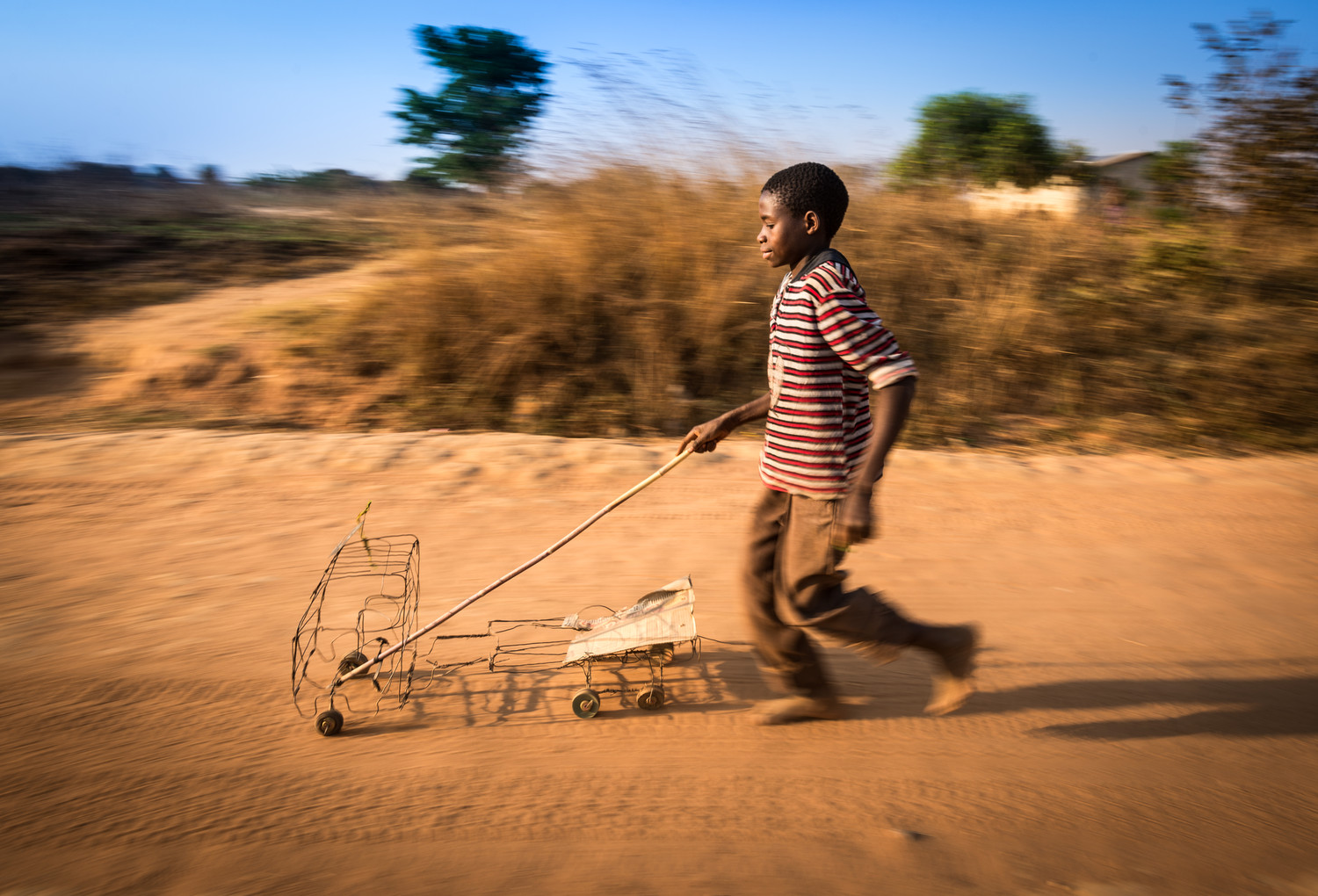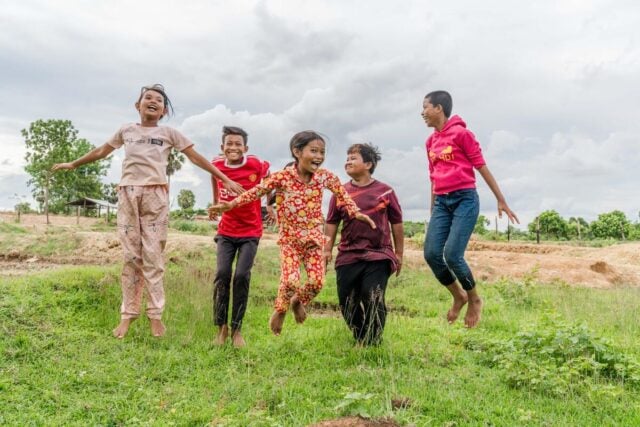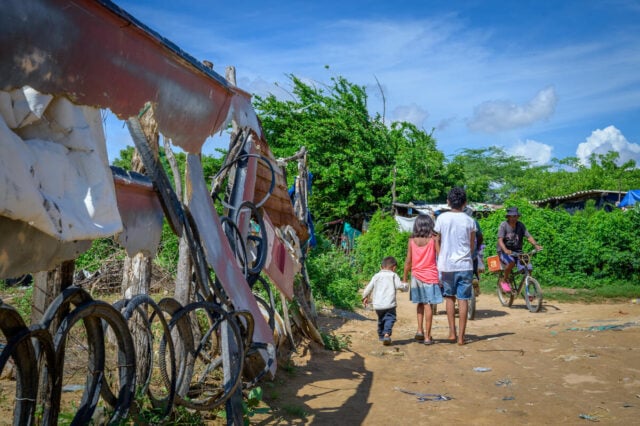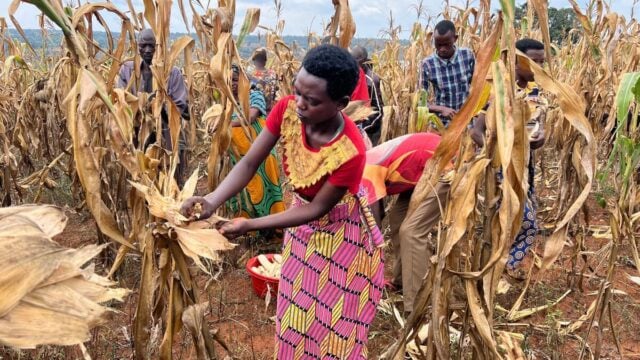Sometimes people in developed countries believe children who live in poverty are a world away, leading a life vastly different from their own. Some of that is true, but despite circumstances, many parallels also exist — simply because we all were once children.
Treasure from trash in Zambia
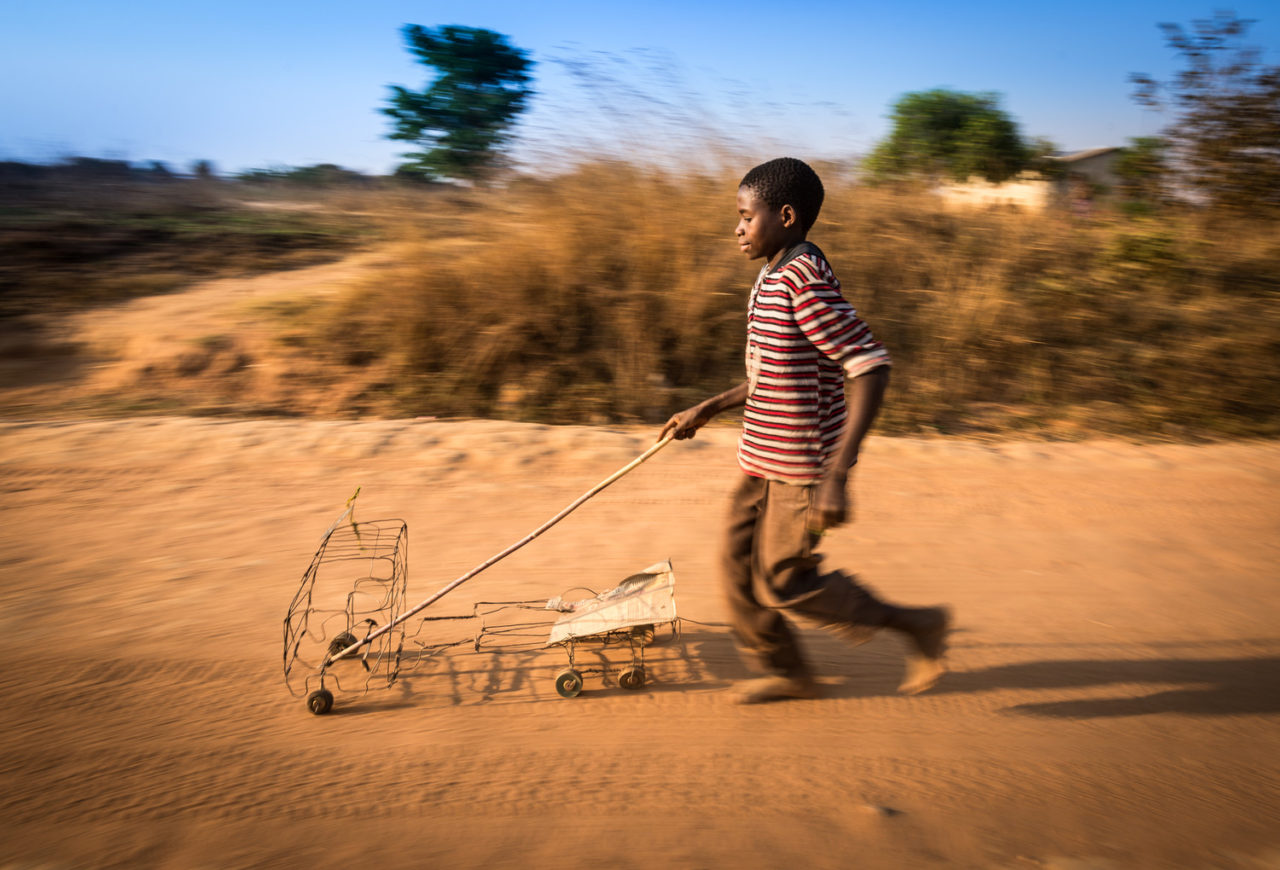
All 13-year-old Felix needed were some scrap pieces of wire, cardboard, and old wooden wheels. His imagination did the rest. This was evident as I saw him push his toy truck down a dirt road in Zambia.
Felix had created something from “nothing ”—what others considered trash, Felix saw a six-wheeler truck.
I wanted to show the motion of Felix’s movement to convey his energy and the possibility of his resourcefulness. So I chose a panning technique instead of freezing the action.
The Zambian sun is bright—even at the end of the day, as it was here. I knocked the ISO down as low as it would go and increased my aperture until I got shutter speeds where I knew I would see motion blur.
As Felix ran by, I swung the camera, following with him so he was in the same part of the frame the whole time. After each pass, I would run up ahead and wait for him. I did this three times.
This was the only frame that showed the background in motion but kept Felix’s face and just enough of his truck in focus to be recognizable. In this, I see the ingenuity and creative potential in children all over the world.
After the final pass, Felix waved goodbye and kept running off into the sunset.
Tetherball in Bolivia
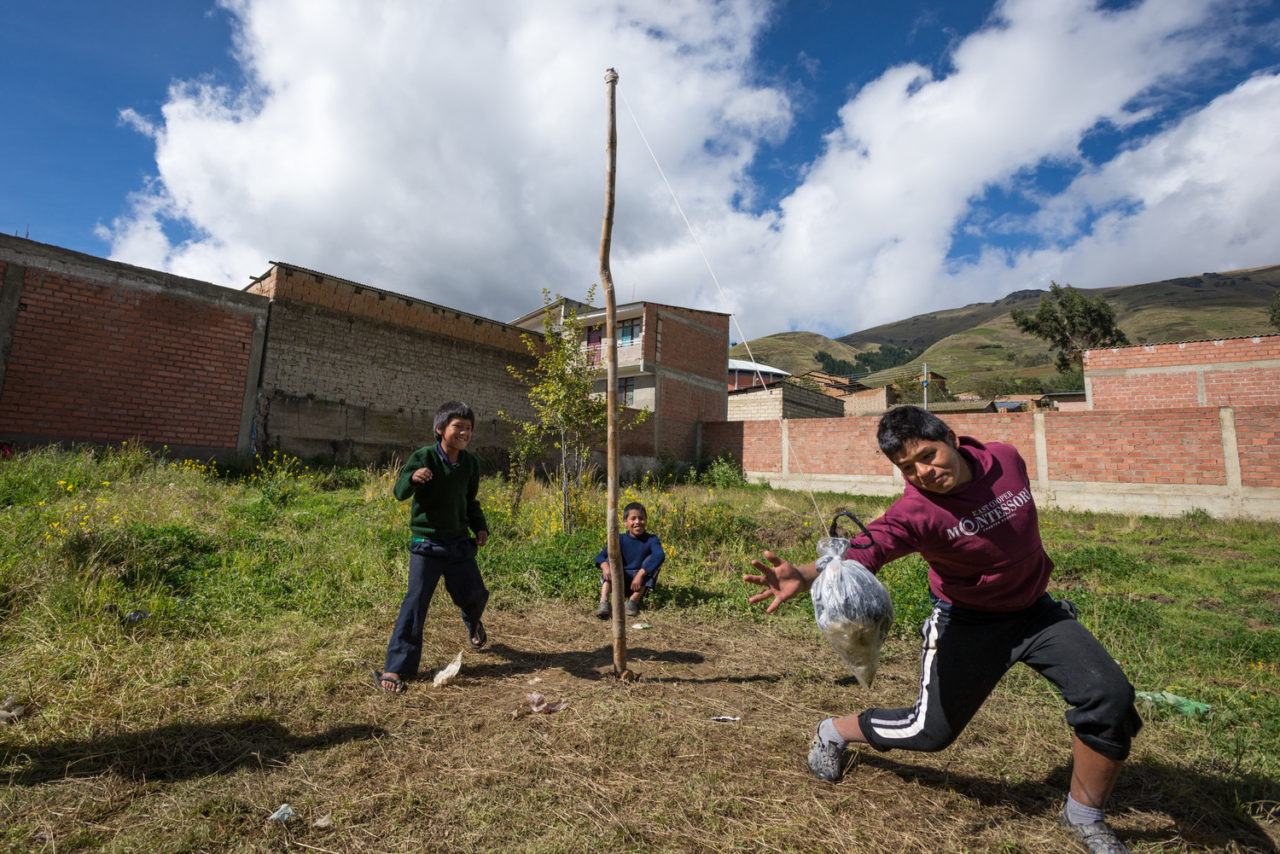
As a child, I played tetherball nearly every day during school recess. My favorite part was trying to whip the ball around and around as it passed by my side of the pole. However, I was never very good. The other kids usually beat me, but it was still fun.
So I had to smile when I stumbled across these children in Bolivia playing a game I was so familiar with. The scene was a snapshot from my childhood, but it wasn’t on the blacktop of my suburban California school. It was in the back lot of a World Vision office, in a community nestled between the lush foothills surrounding Lake Corani in central Bolivia.
No metal pole. No yellow ball. Just plastic bags — lots of them packed together at the end of a rope. And around and around it went, accompanied by lots of jumping and laughter.
I try to look for scenes like this in every country I visit: everyday moments that anyone can connect to their own life.
Hopscotch in Zambia
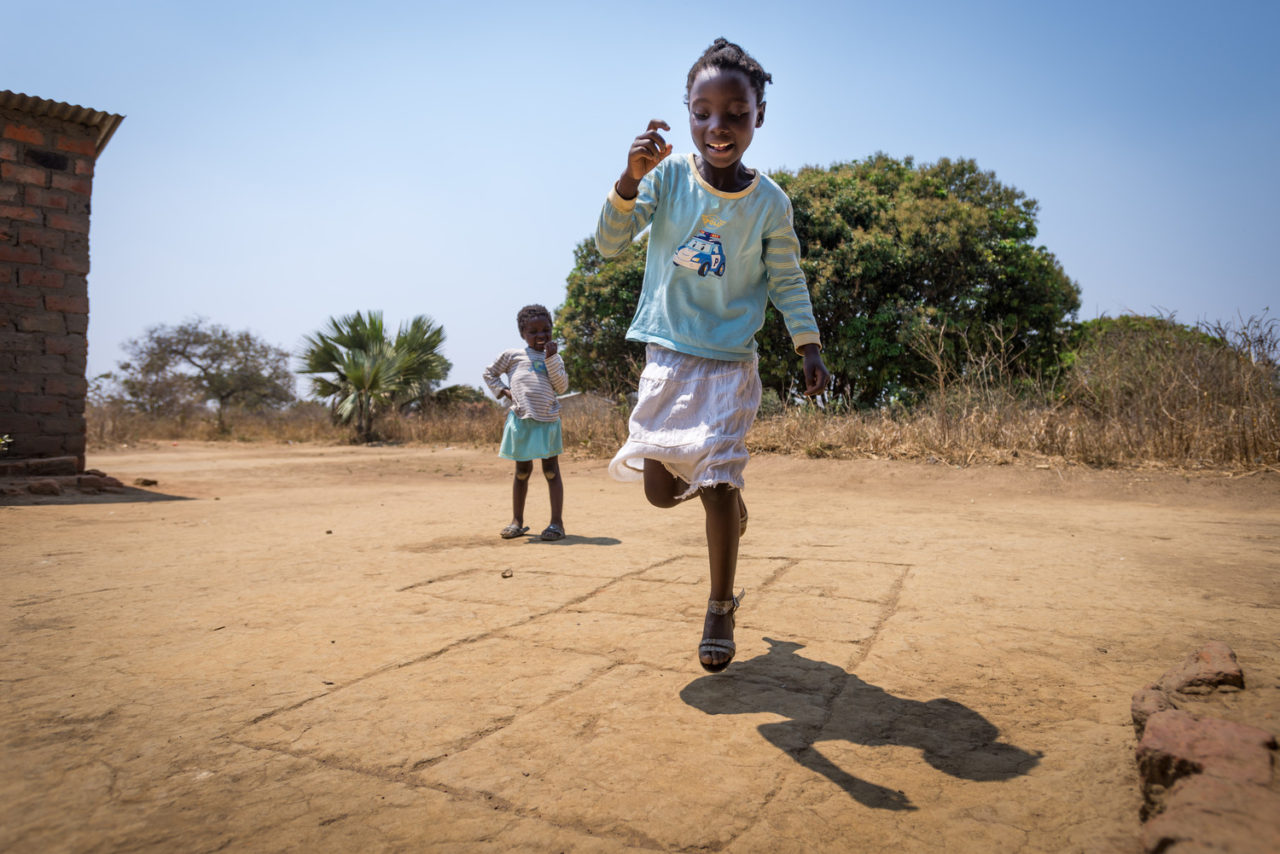
At first, some children are shy and need a little encouragement to come out of their shell.
This was the case with Faith, an 8-year-old sponsored child in Zambia. When I arrived at her home with my colleagues, she sat quietly and respectfully with her parents as they talked about their lives.
My challenge photographically was how, in a limited amount of time, I might move from a formal interview setting to making an image that was natural, fun, and reflective of Faith’s life.
I started by asking her to give me a tour of her home, just to get her talking about familiar things. She showed me where she washes dishes, and where and how they cook, then gave me a demonstration of their tippy tap, a hand-washing station.
Somewhere along the way, I asked what games she likes to play. One game she mentioned was tag. Bingo. I put down my cameras and played tag with Faith and her sisters. While running around I noticed a set of lines dug into the ground. Curious, I asked her how to play this game. Faith immediately tossed a rock and began hopping from square to square.
As she did this, she soon forgot about me, lost in her game of hopscotch — and I now had the picture I’d been looking for.
Baseball in the Dominican Republic
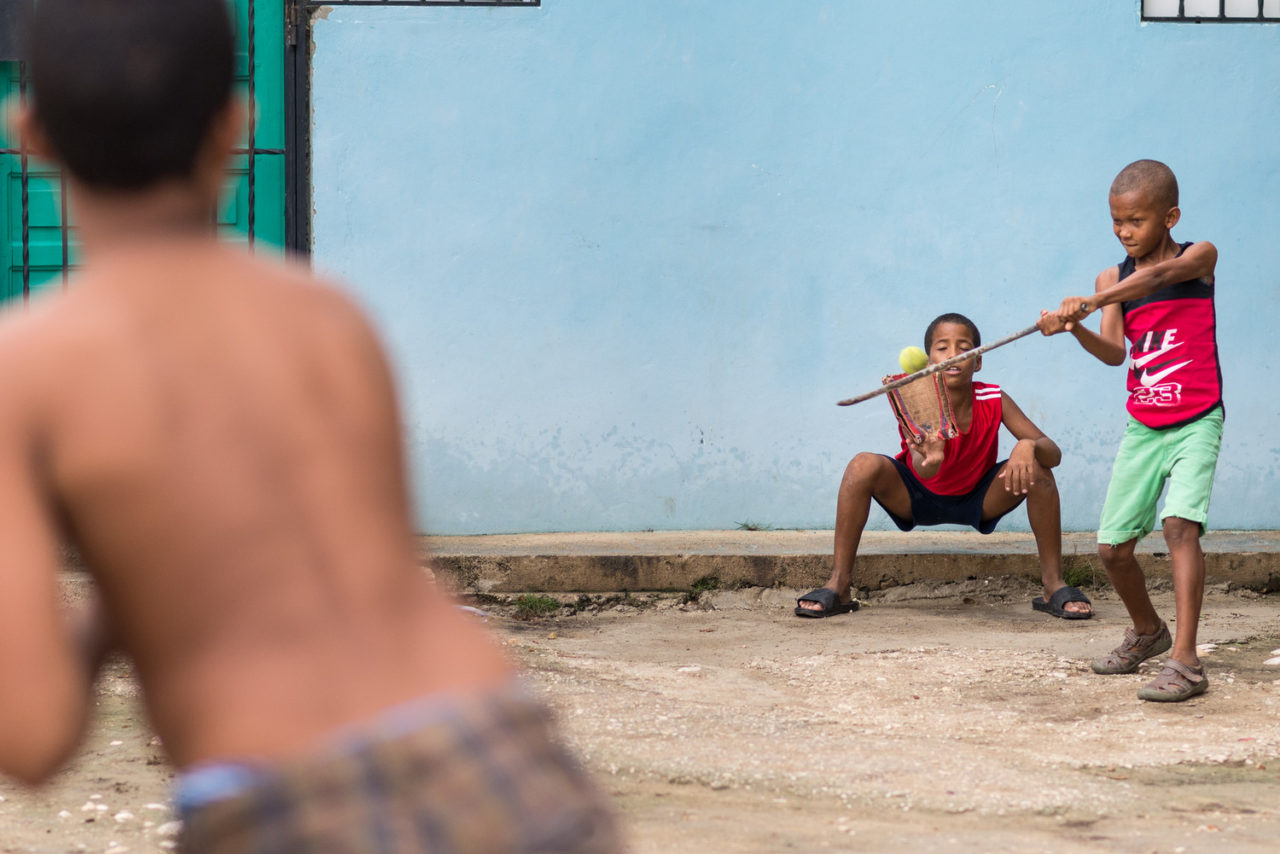
In developing countries, the sport of choice is often football (soccer). Not much is needed to play — just a ball and some open space to run. In the Dominican Republic, however, baseball is the favorite among kids.
The week before making this picture, I had visited Hebeison, a 10-year-old sponsored child, at his home. I was there to talk with his family before a visit by a group of World Vision bloggers. On that first visit I learned that he and his brother liked baseball, so when I returned, I hoped they might be playing a game.
It turns out not much is needed to play baseball, either. An old ball, a metal rod as a bat, and, instead of leather, a piece of tattered cardboard for a catcher’s mitt.
Hebeison’s friend wound up for a pitch and hurled the ball to him, the batter. “Strike!” the catcher yelled as he pulled the ball out of the cardboard, throwing it back to the pitcher.
The next ball was straight down the middle. Hebeison connected. It nearly hit me as it flew by and ricocheted off the minibus we had arrived in.
Of the 864 players on Major League Baseball’s opening day rosters, 82 players are from the Dominican Republic. I wonder who Hebeison was pretending to be as he hit that ball: David Ortiz? Albert Pujols? Robinson Cano?
